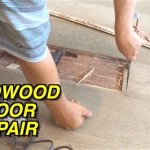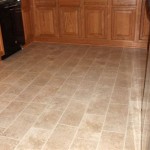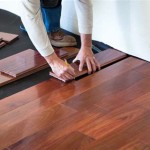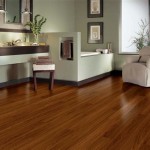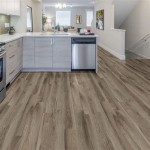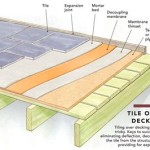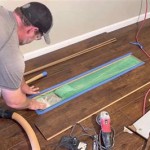How Much Does An Engineered Wood Floor Cost Installed?
Engineered wood flooring has gained immense popularity as a versatile and cost-effective alternative to solid hardwood. It offers the aesthetic appeal of natural wood with enhanced stability and durability due to its multi-layered construction. However, understanding the overall cost associated with engineered wood flooring, including installation, is crucial for informed decision-making. This article delves into a comprehensive breakdown of the factors influencing the final price, assisting homeowners in budgeting effectively for their flooring projects.
The cost of installing engineered wood flooring is not a fixed figure. It varies significantly depending on numerous elements. These factors range from the quality and species of the wood itself to the complexity of the installation process and the geographic location. A thorough analysis of these aspects is essential to accurately estimate the potential expenditure.
Materials Cost: Wood Quality, Veneer Thickness, and Core Composition
The primary determinant of the overall cost is the engineered wood flooring itself. Prices can fluctuate widely based on several key aspects:
Wood Species: The species of wood used for the top veneer layer significantly influences the price. Common options include oak, maple, hickory, walnut, and exotic species like Brazilian cherry or bamboo. Oak and maple are generally more affordable, while rarer or imported species command higher prices.
Veneer Thickness: The thickness of the top veneer layer is another crucial factor. A thicker veneer allows for more refinishing opportunities, extending the lifespan of the floor. Floors with thicker veneers tend to be more expensive than those with thinner ones. Veneer thickness is typically measured in millimeters (mm). Standard thicknesses range from 1mm to 6mm. The thicker the veneer, the more closely the floor will resemble and perform like solid hardwood, and the higher the cost.
Core Construction: The core of engineered wood flooring is typically composed of multiple layers of plywood, high-density fiberboard (HDF), or softwood. The composition and quality of the core material impact the floor's stability and water resistance. HDF cores generally offer better moisture resistance and stability compared to plywood or softwood cores. Higher-quality core materials often translate to a higher price point.
Finish and Texture: Prefinished engineered wood flooring is available in a variety of finishes, including matte, satin, semi-gloss, and high-gloss. Textures can range from smooth to hand-scraped or wire-brushed. Specialized finishes and textures often add to the material cost. The application of UV coatings or aluminum oxide finishes can also increase the durability and cost of the flooring.
Grade and Appearance: The grade of the wood refers to its appearance, including the presence of knots, mineral streaks, and color variations. Higher-grade wood typically has fewer imperfections and a more uniform appearance, commanding a premium price. Character grades, which showcase natural imperfections, may be more affordable but offer a distinct aesthetic.
As a general guideline, the material cost for engineered wood flooring can range from $3 to $15 per square foot or even higher for premium options. It’s crucial to obtain quotes from multiple suppliers and carefully compare the specifications of different products before making a purchase.
Labor Costs: Installation Method, Subfloor Preparation, and Project Complexity
The labor cost for installing engineered wood flooring constitutes a significant portion of the overall expenditure. The complexity of the installation process, the existing subfloor condition, and the chosen installation method all contribute to the final labor charges.
Installation Method: Engineered wood flooring can be installed using several methods, including: glue-down, nail-down, staple-down, and floating. The floating method is generally the least expensive to install as it involves interlocking the planks without directly adhering them to the subfloor. Glue-down, nail-down, and staple-down methods require more labor and specialized tools, increasing the installation cost. The glue-down method, in particular, is often the most expensive due to the extensive preparation required and the cost of the adhesive.
Subfloor Preparation: A level, clean, and dry subfloor is essential for a successful engineered wood flooring installation. If the existing subfloor is uneven, damaged, or contaminated, it must be properly prepared before installation can begin. This may involve leveling the subfloor with self-leveling compound, repairing cracks or damage, and thoroughly cleaning the surface. Significant subfloor preparation can add considerably to the labor cost. Humidity testing and moisture mitigation can add to this cost as well.
Room Size and Layout: Larger rooms generally require more labor hours to install flooring. Complex room layouts with numerous corners, doorways, or custom designs can also increase installation time and cost. Intricate patterns, such as herringbone or chevron, also add to the overall labor time and expense.
Removal of Existing Flooring: If existing flooring needs to be removed before installing the new engineered wood floor, this will add to the labor cost. The cost of removal varies depending on the type of existing flooring (e.g., carpet, tile, laminate) and the ease of removal. Disposal fees for the removed flooring may also apply.
Baseboard and Trim Installation: After the flooring is installed, baseboards and trim are typically installed to provide a finished look and cover the expansion gap around the perimeter of the room. The cost of baseboard and trim installation can vary depending on the type of trim used and the complexity of the installation. Some homeowners opt to handle this part of the project themselves to save on labor costs.
Obstacles and Special Considerations: The presence of obstacles such as stairs, built-in cabinets, or plumbing fixtures can increase the complexity and cost of installation. Installing flooring around these obstacles requires extra time and precision. Additionally, if the installation area requires specialized tools or equipment, such as a moisture meter or a pneumatic nailer, this may add to the overall cost.
On average, labor costs for installing engineered wood flooring typically range from $3 to $8 per square foot. It is advisable to obtain multiple quotes from qualified flooring installers and carefully review their experience, credentials, and insurance coverage. A detailed contract outlining the scope of work, payment schedule, and warranty information is crucial to protect your interests.
Additional Costs: Underlayment, Moisture Barriers, and Contingency Funds
Beyond the cost of materials and labor, several additional expenses can contribute to the overall cost of an engineered wood flooring project. These include underlayment, moisture barriers, and contingency funds.
Underlayment: Underlayment is a thin layer of material installed between the subfloor and the engineered wood flooring. It provides several benefits, including sound insulation, moisture protection, and added comfort underfoot. The type of underlayment required depends on the specific flooring product and the subfloor conditions. Common options include foam, cork, and rubber. The cost of underlayment typically ranges from $0.50 to $2 per square foot. Some engineered wood flooring products come with an attached underlayment, which can save on material and installation costs.
Moisture Barriers: In areas with high humidity or potential moisture problems, a moisture barrier may be necessary to protect the engineered wood flooring from water damage. A moisture barrier is typically a thin plastic sheet that is installed over the subfloor before the underlayment and flooring. The cost of a moisture barrier is relatively low, typically ranging from $0.10 to $0.50 per square foot. However, it is an essential investment in areas prone to moisture.
Transitions and Moldings: Transitions and moldings are used to create a seamless transition between different types of flooring or to cover expansion gaps around the perimeter of the room. Common types of transitions include T-moldings, reducers, and thresholds. Moldings are typically used to cover the gap between the flooring and the wall. The cost of transitions and moldings can vary depending on the material and style. Matching transitions and moldings to the color and finish of the engineered wood flooring can add to the aesthetic appeal of the project.
Moving Furniture and Appliances: If the installation area contains furniture or appliances, the cost of moving these items may need to be factored into the budget. Some flooring installers include furniture moving as part of their service, while others may charge an additional fee. It is important to clarify this with the installer before the project begins.
Disposal Fees: Disposal fees for removing and disposing of old flooring and construction debris can add to the overall cost. These fees can vary depending on the local regulations and the amount of material being disposed of. Some installers include disposal fees in their overall quote, while others may charge them separately.
Contingency Fund: It is always wise to set aside a contingency fund to cover unexpected costs that may arise during the flooring installation process. This fund can be used to address unforeseen issues such as hidden subfloor damage, unexpected plumbing problems, or changes in the scope of work. A contingency fund of 5% to 10% of the total project cost is generally recommended.
When estimating the cost of an engineered wood floor installation, it is essential to get a detailed quote including all possible expenses. Not doing so could result in unpleasant budget surprises. A comprehensive understanding of all aspects can contribute to a successful flooring project.

How Much Does Engineered Hardwood Flooring Cost 2025 Today S Homeowner

Cost To Install Hardwood Flooring Floor Fixr

How Much Does Hardwood Flooring Cost 2025

Cost Of Laying Engineered Wood Flooring With Diffe Patterns Major

Cost To Install Hardwood Flooring Floor Fixr

Cost Of Laying Engineered Wood Flooring With Diffe Patterns Major

How Much Does It Cost To Install Hardwood Flooring

Engineered Wood Cost Estimator Estimate Florida Consulting

Engineered Hardwood Flooring Installation Cost 1 Best Guide

Flooring Installation Cost Guide 2025 Average S By Type
See Also
